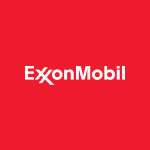ExxonMobil Q4 2020 Earnings Report
Key Takeaways
ExxonMobil reported a fourth quarter 2020 loss of $20.1 billion, which included $20.2 billion of unfavorable identified items. Excluding these items, earnings were $110 million, or $0.03 per share. The company exceeded its cost-reduction objectives and met its 2020 methane and flaring emission reduction targets.
Fourth quarter loss of $20.1 billion included unfavorable identified items of $20.2 billion, primarily non-cash impairments; earnings excluding identified items were $110 million, or $0.03 per share assuming dilution.
Exceeded cost-reduction objectives, with 2020 capital spending of $21 billion below target by $2 billion; cash operating expense more than 15% below 2019, of which $3 billion is a structural reduction.
Met 2020 methane emissions (15%) and flaring (25%) reduction targets versus 2016, and announced 2025 emission reduction plans; projected to be consistent with the Paris Agreement
Additional annual structural operating expense reductions of $3 billion expected by 2023, resulting in total annual structural reductions of $6 billion versus 2019
Forward Guidance
ExxonMobil expects 2021 cash flow to cover capital expenditures while maintaining the dividend and a strong balance sheet, assuming Brent prices of $50 per barrel and the lowest annual Downstream and Chemical margins during 2010-2019. The company plans to further reduce the intensity of its operated upstream greenhouse gas emissions by 15 to 20 percent by 2025, compared to 2016 levels.
Positive Outlook
- Cash flow this year expected to cover capex and maintain dividend and strong balance sheet.
- Assumptions include Brent prices of $50 per barrel and lowest annual Downstream and Chemical margins during 2010-2019; portfolio flexibility enables further adjustments
- Approximately 90 percent of ExxonMobil’s 2021-2025 upstream development capital expenditure has a cost-of-supply of $35 Brent per barrel or lower.
- The company’s integrated portfolio and low cost-of-supply upstream projects enable it to maintain the dividend and fund annual 2022-2025 capital investments, while preserving balance sheet strength, at Brent prices between $45 and $50 per barrel, assuming 2010-2019 average Downstream and Chemical margins.
- The 2021-2025 start-ups are expected to generate approximately 40 percent of operating cash flows in 2025.
Challenges Ahead
- Should the price and margin environment fall below these levels, capital expenditures can be further reduced to enable dividend coverage and maintenance of balance sheet strength at Brent prices of approximately $45 per barrel.
Historical Earnings Impact
Analyze how earnings announcements historically affect stock price performance
